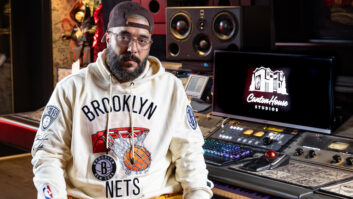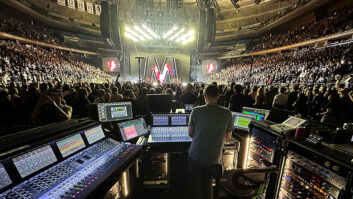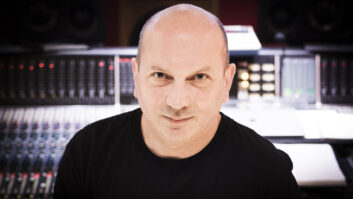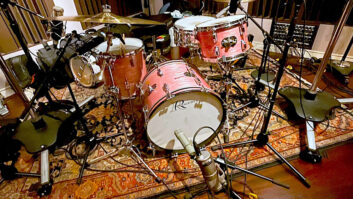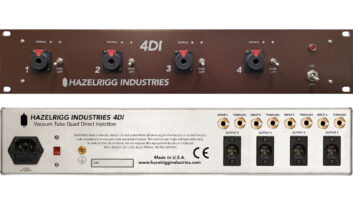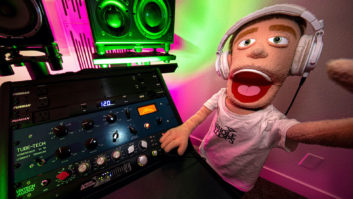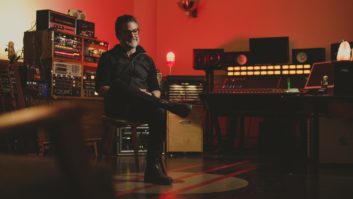As often as possible, we need to remind the people we mentor that the fundamentals of audio apply to both studio and stage. And in many instances, the tools and techniques we use on either gig are not as different as they might think.
I bring this up because I often encounter students who are eager to get into the audio side of the music biz, but don’t realize the breadth of opportunities that would be available to them if they were to have a solid foundation in audio technology. In other words, it’s not the products you own that will ensure you have a long career, but the skills you acquire (as well as the ability to learn quickly and hustle up work). Of course, you need specialized training and plenty of hands-on experience to get the most out of a large-format studio console or a digital FOH rig. But a solid grasp of audio fundamentals is what you need to work your way into any aspect of this business.
One of the students in my Intro to Pro Tools class this semester is a live sound engineer who works regularly at a local club. He decided to take my course because he makes multitrack recordings of the shows, despite the fact that his recording setup—PreSonus Capture software fed by a StudioLive mixer/interface—is altogether different than the Avid-based gear we use at Diablo Valley College. But he sees that the skills needed to record quality audio are the same no matter what you plug into.
As it turns out, a large portion of the information we covered in class was directly applicable to his live sound gig: sound dispersion concepts, transducer info, mic placement, gain staging, signal flow, file resolution and mixing concepts, just to name a few. Although he already has a lot of experience, with hundreds of hours at FOH under his belt, he was very happy to fill in the gaps of his education in order to find ways to increase efficiency on the job.
What I got in return from this student was a reminder that the band, the club and the audience are the customers, not the other way around. And while we would sometimes like to believe that the customer-is-always-right concept doesn’t necessarily apply here, they have to be kept happy, even it means having the patience of Job to do so.
In fact, our conversations would often focus on how little performing artists know about what’s involved in doing live sound. They think that setting up and doing a show at a venue should be a plug-and-play experience, like everything else in their lives.
Then again, why shouldn’t it be?
They should not be distracted from doing their job because the venue didn’t hold up its side of the bargain. Some of my best playing experiences (particularly in bands where we didn’t have our own sound person) were in situations where everything stage-related was taken care of—power distribution was sorted out ahead of time, plenty of outlets provided, DIs were available when needed, and there were no grounding issues or noise surprises. And that’s before we even started soundcheck.
Unfortunately, the venue size and its name recognition does not always guarantee performer satisfaction. The level of attention that puts a performing artist at ease requires a sense of pride and ownership on the part of the tech crew, regardless if they’re venue staff, union members or freelancers. Just like the musicians onstage, the person running sound has to want to get it right—and to make it right, without excuses, even if they’re just filling in for the evening.
It’s a given that very few stages (or whatever you call that corner in the back of the bar) are designed with music in mind. For example, it’s likely that the power outlets are on the same circuit as the refrigerators, microwave, air conditioner, and who knows what else, resulting in AC lines that are noisy and messy when powering audio gear. If you are lucky, it won’t play havoc with the amps and computers, while in the worst-case scenario it can be downright dangerous.
In these situations, pre-emptive troubleshooting, especially in an unfamiliar venue, is the key to customer satisfaction. That might mean getting out the multimeter and checking the outlets that will be accessed by the band. Or firing up the flashlight to look behind the desk for potential issues. It doesn’t take an electrical engineering degree to predict where things can go wrong.
But it does take a deep understanding of the basics, which can then be applied to every issue that comes up—foundational information that, ultimately, will translate to any gig you get and keep those doors of opportunity open. Because keeping the customer happy requires a lot more than an encyclopedic knowledge of the key commands used in a digital audio workstation.

